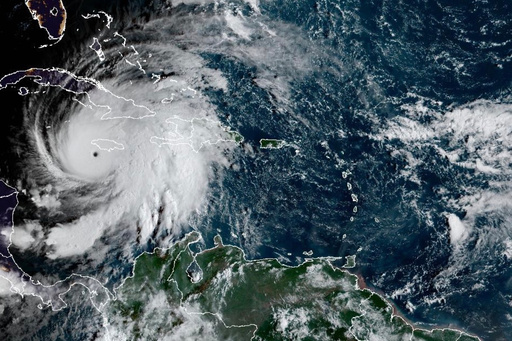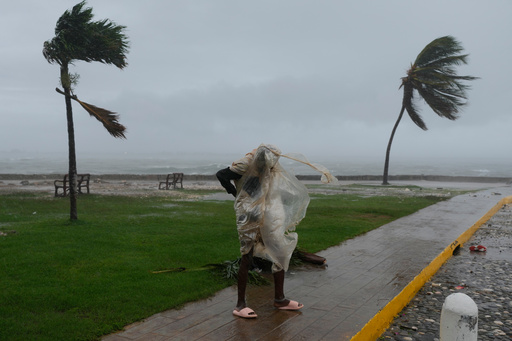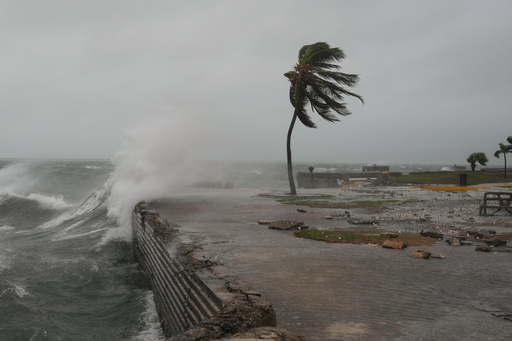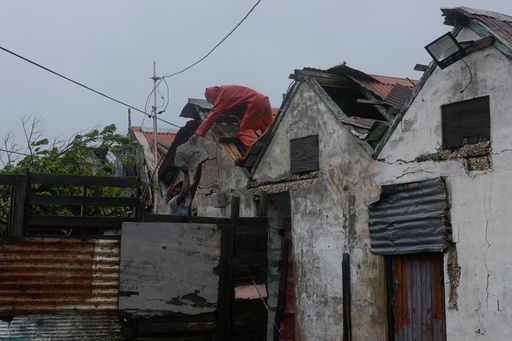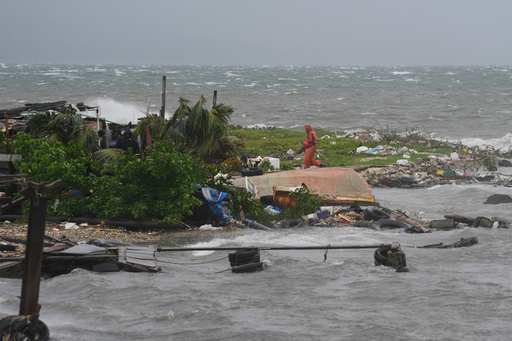What to know about Hurricane Melissa
News > National News

Audio By Carbonatix
12:49 PM on Tuesday, October 28
By ISABELLA O'MALLEY
Hurricane Melissa made landfall in eastern Cuba as a Category 3 storm early Wednesday after bringing violent winds and heavy rainfall to Jamaica, where it made landfall as a Category 5 storm Tuesday.
Authorities in Cuba evacuated more than 735,000 people, Cuba’s President Miguel Díaz-Canel said on X. Forecasters warned the Category 3 storm would unleash catastrophic damage in Santiago de Cuba and nearby areas.
Melissa was forecast to cross the island through the morning and move into the Bahamas later Wednesday.
Extensive damage was reported in parts of southern and southwestern Jamaica, including four damaged hospitals and more than half a million customers without power.
Here is what to know about the storm:
Melissa was a Category 5 hurricane, the highest level, when it made landfall Tuesday in Jamaica. It was the strongest to hit the island since recordkeeping began 174 years ago. Melissa caused power outages, fallen trees, landslides, and heavy flooding and tore off roofs in Jamaica.
The U.S. National Hurricane Center warned earlier that the situation was “extremely dangerous” and urged Jamaican residents to remain sheltered until the life-threatening conditions pass.
Hurricane Melissa’s 185 mph (295 kph) winds and 892 millibars of central pressure tied two records for the strongest Atlantic storm on landfall. The pressure — the key measurement meteorologists use — tied 1935’s Labor Day hurricane in Florida, while wind speed tied a 1935 hurricane and 2019’s Hurricane Dorian, said hurricane scientists Phil Klotzbach of Colorado State University and Brian McNoldy of the University of Miami.
U.N. agencies and dozens of nonprofits had food, medicine and other essential supplies prepositioned as they awaited a distribution rush after the storm.
The NHC warned that catastrophic flash flooding and landslides also are possible in Cuba and Hispaniola, the island which Haiti and the Dominican Republic share.
Cuban officials said they were evacuating more than 700,000 people from the region, including in Santiago, the island’s second-largest city.
The storm was expected to generate a storm surge of up to 12 feet (3.6 meters) in the region and drop up to 20 inches (51 centimeters) of rain in parts of eastern Cuba.
The NHC warned of 5 to 10 inches (13 to 26 centimeters) of rainfall with the potential for flash flooding in the southeastern Bahamas and the Turks and Caicos on Tuesday and Wednesday. Additional rainfall is expected in southern Hispaniola through Wednesday.
Melissa reached tropical storm status last Tuesday and then became a hurricane on Saturday. Melissa then rapidly intensified into a Category 5 hurricane early Monday morning.
Climate scientists have linked warming ocean temperatures to hurricanes intensifying more quickly. Abnormally warm ocean waters of about 2 to 3 degrees Celsius (3.6 to 5.4 degrees Fahrenheit) above normal helped double Hurricane Melissa’s wind speed in less than 24 hours, scientists said.
Rapid intensification occurs when the maximum sustained winds of a tropical cyclone increase by at least 30 knots or 35 mph (56 kph). Warmer temperatures also give hurricanes fuel to unleash more rain.
Scientists said Melissa is the fourth storm in the Atlantic this year to undergo rapid intensification.
Storms that ramp up so quickly complicate forecasting and make it harder for government agencies and nonprofits to plan for emergencies.
___
The Associated Press’ climate and environmental coverage receives financial support from multiple private foundations. AP is solely responsible for all content. Find AP’s standards for working with philanthropies, a list of supporters and funded coverage areas at AP.org.
